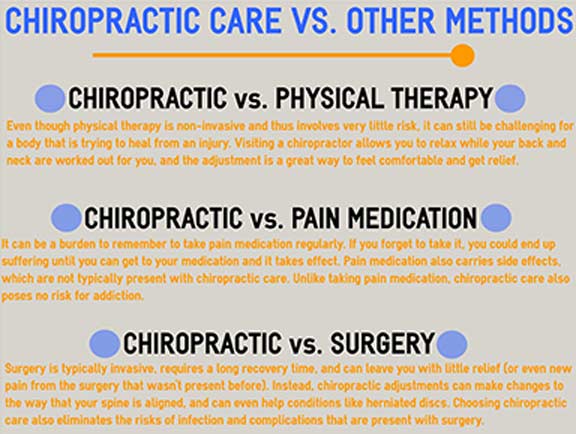Does Cold Laser Therapy Deal Benefits For Managing Chronic Pain?
Does Cold Laser Therapy Deal Benefits For Managing Chronic Pain?
Blog Article
Content Develop By-Tanner Rankin
You may have found out about cold laser therapy as a potential remedy for persistent pain relief, yet how precisely does it work? The concept of using low-level laser light to ease relentless discomfort might seem appealing, however does it absolutely deliver on its guarantees? Allow's discover the science behind cold laser therapy and whether maybe the key to managing your chronic discomfort successfully.
Understanding Cold Laser Treatment
To comprehend cold laser treatment, you should realize the fundamental principles of exactly how this non-invasive therapy technique functions. Cold laser therapy, additionally called low-level laser therapy (LLLT), entails the use of low-intensity laser light to stimulate healing at the cellular level. This type of therapy is commonly made use of to decrease inflammation, minimize discomfort, and advertise tissue repair service in various problems.
Throughout a cold laser treatment session, a qualified healthcare expert will use the laser device directly to the skin in the afflicted area. The light power emitted by the laser passes through the skin and is taken in by the cells, where it's converted into biochemical energy. This power helps to promote cellular procedures, increase circulation, and minimize inflammation, leading to pain relief and increased recovery.
Cold laser treatment is a risk-free and pain-free treatment alternative that can be made use of alone or in combination with other therapies to take care of chronic discomfort efficiently.
Device of Pain Alleviation
Recognizing the device of pain relief in cold laser treatment involves understanding just how low-intensity laser light interacts with cellular procedures to alleviate pain. When the cold laser is put on the skin, it penetrates the tissue and is soaked up by the mitochondria within the cells. This absorption activates a series of responses that bring about boosted manufacturing of adenosine triphosphate (ATP), the power money of the cell.
The heightened ATP manufacturing increases mobile function, including faster cells repair and minimized inflammation.
In addition, the laser light boosts the release of endorphins, which are the body's natural pain relievers. These endorphins aid to obstruct discomfort signals and enhance the feeling of health.
In addition, cold laser treatment promotes vasodilation, boosting blood flow to the damaged location. This improved blood flow brings a lot more oxygen and nutrients to the cells, assisting in the healing procedure and lowering discomfort.
Efficacy in Chronic Discomfort Monitoring
Cold laser treatment demonstrates significant effectiveness in handling chronic discomfort by targeting underlying mobile processes and promoting natural discomfort alleviation systems. By routing low-level laser light at damaged areas, this non-invasive therapy can promote the production of endorphins, which are the body's all-natural medicines. This process helps reduce inflammation and enhance blood flow, assisting in the alleviation of persistent pain signs and symptoms.
Research studies have revealed that cold laser treatment is particularly reliable in treating problems such as joint inflammations, fibromyalgia, and neuropathy. https://sergiouqkes.bloggerbags.com/35018591/cold-laser-therapy-for-alleviating-anxiety-the-pioneering-strategy-you-required-for-obtaining-a-calmer-way-of-living permeates deep right into the tissues, improving cellular function and speeding up the recovery process. https://israeldysng.blogdun.com/30414157/do-you-inquire-on-exactly-how-cold-laser-treatment-can-assist-in-the-removal-of-contaminants-and-improve-wellness to decreased discomfort levels and improved variety of movement for individuals dealing with chronic pain.
Furthermore, cold laser therapy offers a safe and drug-free alternative for chronic pain management, minimizing the threat of damaging adverse effects commonly associated with medications. Its ability to supply lasting alleviation makes it a useful option for those looking for sustainable discomfort administration remedies.
Conclusion
Finally, cold laser therapy uses an encouraging service for persistent pain alleviation by targeting cellular processes to reduce inflammation, boost endorphin release, and boost blood flow.
This non-invasive and drug-free approach provides long-lasting relief without the negative effects of conventional discomfort medications.
Consider discovering cold laser therapy as a safe and efficient option for taking care of persistent pain conditions such as arthritis, fibromyalgia, and neuropathy.
